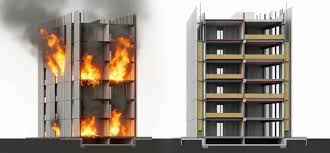.png)
A new Pew Research study has found that recently constructed apartment buildings have significantly better fire safety outcomes than older multifamily housing, both in Massachusetts and across the country.

In Massachusetts, apartments built before the year 2000 recorded a fire death rate of 4.7 per million residents in 2023 and 2024. In stark contrast, residential buildings constructed in the past 25 years saw zero fire deaths during the same period.
The national numbers underscored the same pattern. In 2023, the fire death rate for apartments built after 2000 was 1.2 deaths per million residents, compared with 7.7 deaths per million in older properties.
At a media briefing, Pew’s housing policy initiative project director emphasized both the safety and housing benefits of newer construction.
“Modern apartments are often the best, fastest and most affordable way to construct new housing and ease the growth in housing costs — and they are also by far the safest homes in the U.S. in terms of fire deaths,” said Alex Horowitz. “This data can help policymakers remove unnecessary barriers to new apartment construction, help address the housing shortage and actually save lives over time by providing renters and homeowners with safer housing.”
Experts point to several reasons behind the safety gap:
Housing advocates and policy analysts say the findings could influence statewide and local development rules. They argue that expanding multifamily construction may not only address affordability challenges but also improve resident safety over time.
The report adds new urgency to ongoing zoning and permitting debates, with data suggesting that public safety gains could accompany an increase in new residential developments.
Originally reported by Elizebeth Kanzeg Rowland in Boston Agent Magazine.